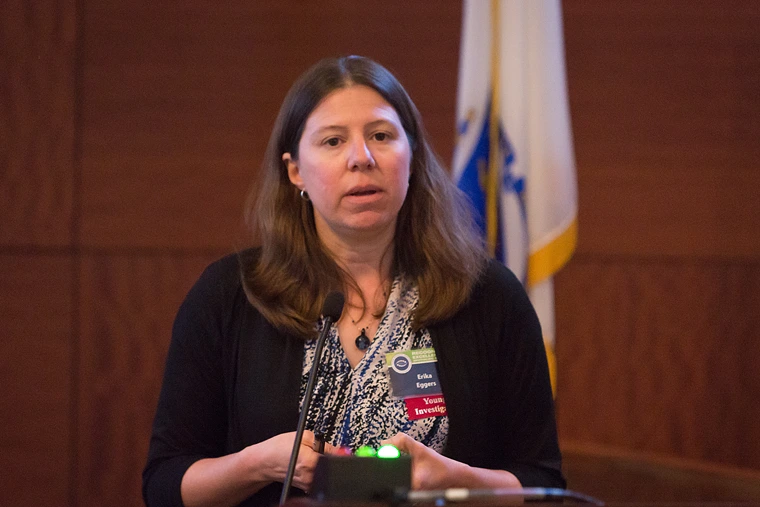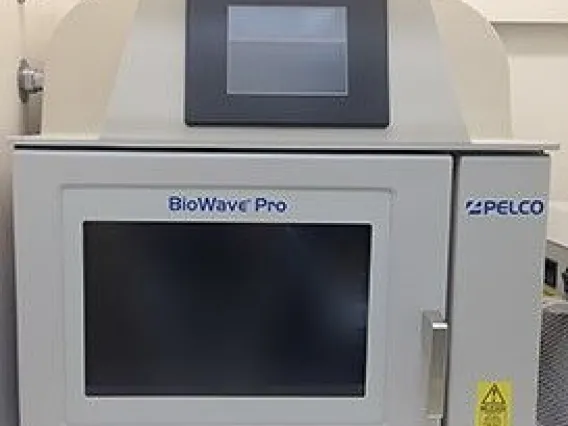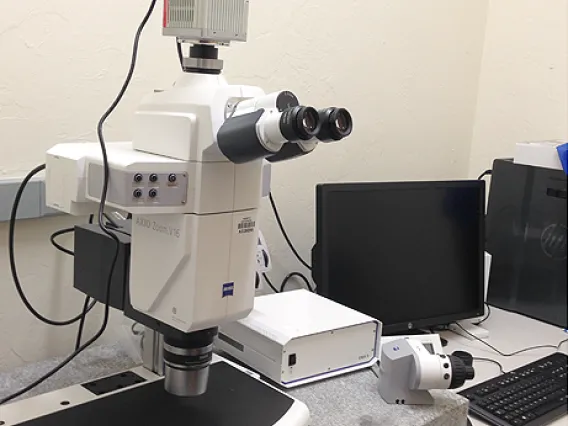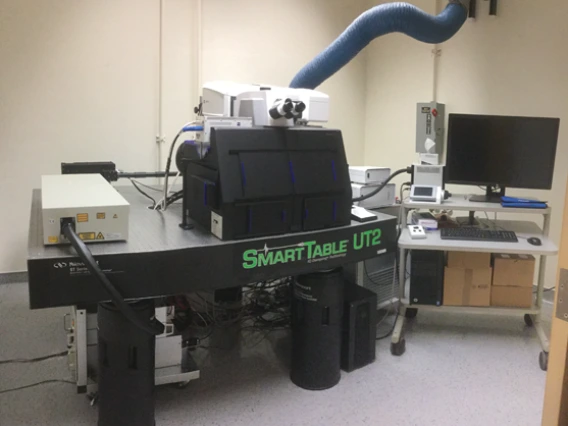Assisted use - staff operation of specific instruments
There are times when users need quality microscope data immediately, or they may only need a few example images to compliment other scientific data for a publication or a grant submission. Our experienced core managers are available to operate the microscopes on your behalf. The charges for assisted use are calculated at the routine hourly usage rate plus an hourly staff labor charge (rates are available in iLab).
Sample preparation strongly affects the quality of the images that can be captured with a microscope. If a user brings us a poorly prepared sample, we will give the user the best images that are possible with that otherwise compromised sample. Please consult with us ahead of time to ensure a good outcome.
While we are very familiar with our instruments, occasionally we are asked to perform an imaging method that we have not done before. This may require additional research on our part, and perhaps additional training from the vendor before we can successfully perform the new method. Depending on the amount of time involved, we may need to discuss an additional staff labor fee.
NOTE: BSL2 samples must be discussed with the on-site core manager BEFORE they arrive in the facility.







